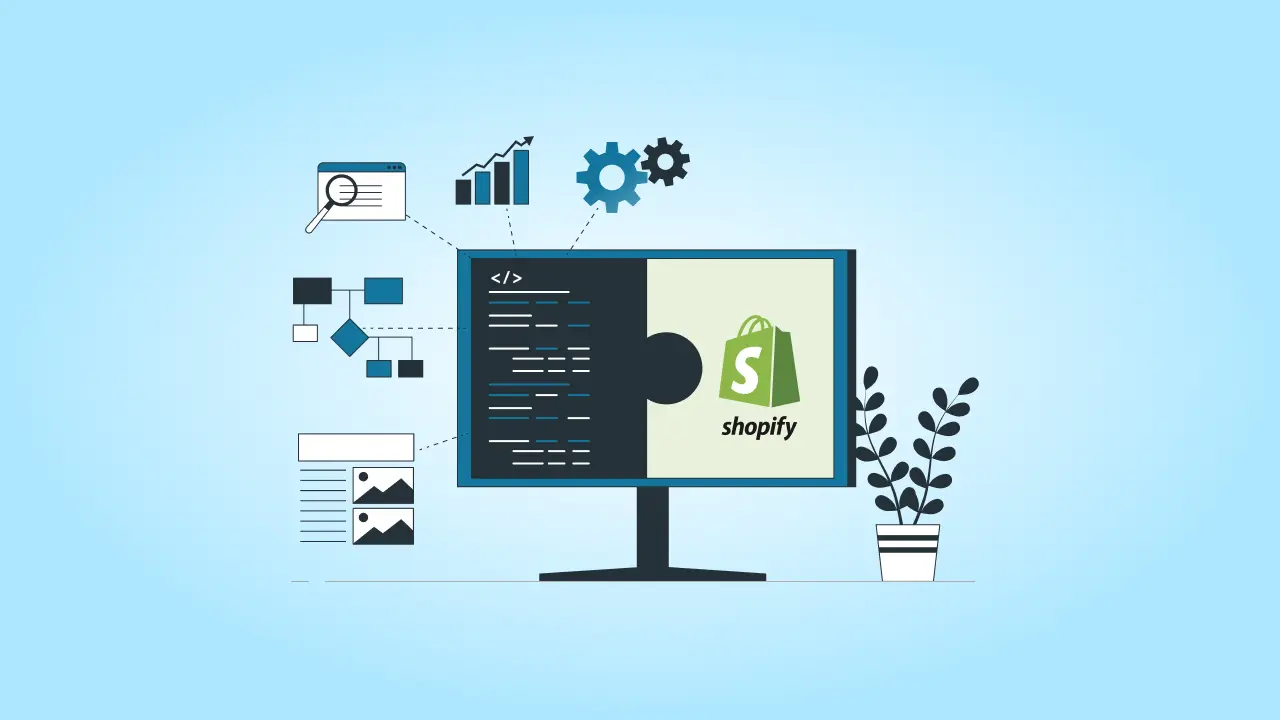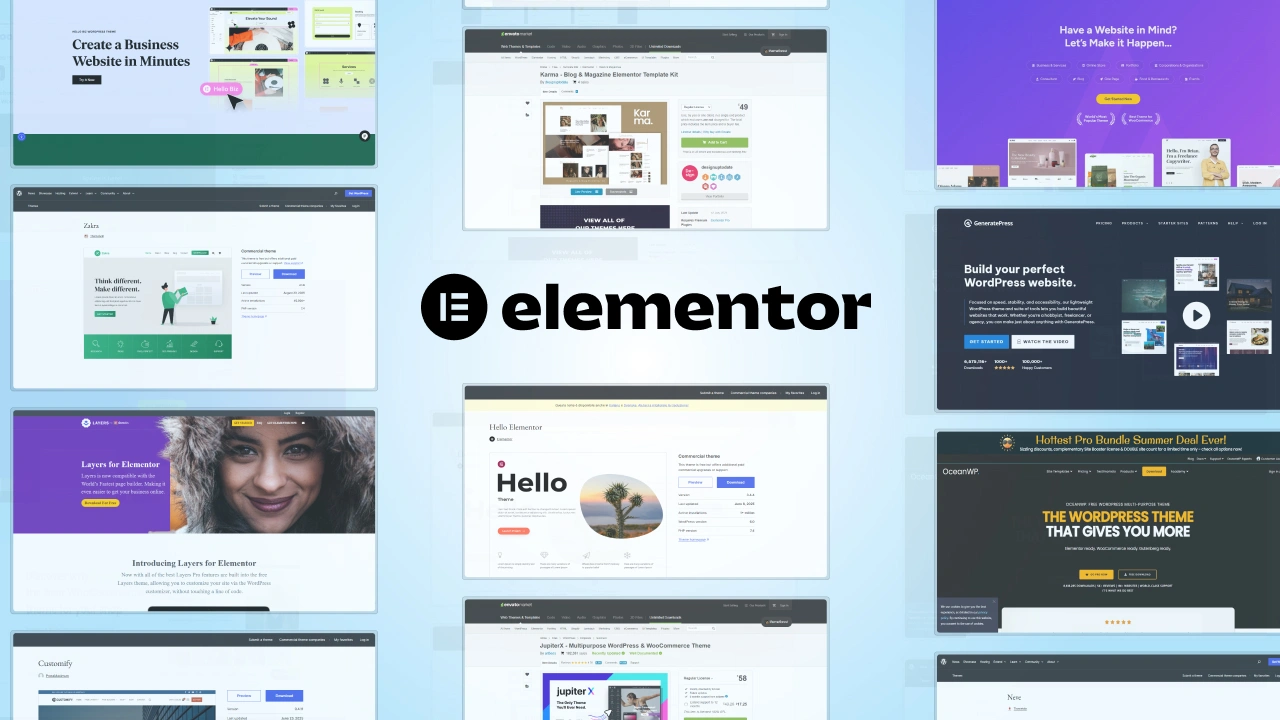If you are in the eCommerce industry, there’s a good chance you have heard of Shopify, or you may already be using it to run your online shopify store. Lately, Shopify has become a go-to platform for anyone looking to sell online, from small business owners just starting out to large brands expanding their reach.
And it’s easy to see why: Shopify makes setting up and managing an online store about as simple as it gets, with tools to handle everything from product listings to payments.
🔍 Did You Know? More than 4 million active eCommerce websites are currently built and powered by Shopify.
But as your business grows, so do the day-to-day demands. Managing orders, keeping up with customer service, handling marketing, and tracking inventory can quickly get overwhelming. That’s where Shopify integrations come into play.
In simple terms, these integrations connect Shopify with a range of other apps and tools to streamline all those moving parts, making it easier to run your business and keep your customers happy. You can connect with everything from email marketing platforms and social media channels to shipping services and customer support apps, all in one place.
So, why should your eCommerce business look into Shopify integrations? It comes down to saving time, staying organized, and creating a seamless experience for your customers. And in a competitive online market, a smooth operation can make all the difference.
By the time you finish this article, you will know what Shopify integration is, the key benefits it brings, and how it can help your business run more smoothly and grow faster. Let’s dive in!
What is Shopify Integration?
At its core, Shopify integration means connecting your Shopify store with various apps, services, or tools to make it work more efficiently and give you extra functionality.
Imagine being able to automate tedious tasks, organize your inventory seamlessly, or connect directly with customers—all without having to switch between different platforms or do everything manually. That’s the power of Shopify integration.
By linking Shopify with specialized tools, you streamline your operations, enhance what your store can do, and create a smoother, more enjoyable experience for both you and your customers.
Make your Shopify store work smarter, not harder. Partner with cmsMinds for expert integration support tailored to your e-commerce needs.
Types of Shopify Integrations
There are plenty of ways you can integrate Shopify with tools that handle different aspects of your business. Let’s explore some of the main categories and see how they can make your store more effective:
1. Marketing Tools (Email Marketing, Social Media)
Marketing integrations connect Shopify with platforms that help you reach and engage your audience. For example:
- Email Marketing Tools (like Klaviyo or Mailchimp): Send personalized emails to customers, automate follow-ups, or share promotions and updates.
- Social Media Integrations (like Facebook or Instagram): Allow you to sell directly on social platforms, run targeted ads, or sync product catalogs to expand your reach.
With these tools, you can create stronger, more personalized marketing campaigns, helping you attract and retain customers.
2. Inventory & Order Management
Keeping track of inventory and orders can be challenging as your store grows. Integrations with inventory management tools can help:
- Inventory Management Software (like TradeGeckoor or Cin7): Automatically update stock levels across all sales channels, reducing the risk of selling out or overselling.
- Order Management Tools: Simplify order processing and fulfillment, ensuring orders are accurately tracked and shipped on time.
These integrations help you stay organized and efficient, especially if you’re managing a large number of products or selling on multiple channels.
3. Shipping & Logistics
Shipping is a critical part of the customer experience, and shipping integrations can make it a breeze:
- Shipping Platforms (like ShipStation or Easyship): Automate shipping label creation, compare rates, and provide real-time tracking updates to customers.
- Logistics Solutions: Connect with warehousing and fulfillment services for streamlined packing and delivery, especially helpful if you use third-party logistics (3PL) providers.
With shipping integrations, you can keep delivery costs low, provide accurate tracking, and ensure customers get their orders on time.
4. Customer Support (Live Chat, CRM Tools)
Providing top-notch customer support is key to building trust and loyalty. Customer support integrations help you stay connected with your customers:
- Live Chat Tools (like Tidio or Zendesk): Offer real-time support for quick questions or product guidance.
- CRM (Customer Relationship Management) Tools (like HubSpot or Salesforce): Keep track of customer interactions, manage contact details, and personalize customer service.
These tools help you build better relationships with your customers, making it easier to respond quickly to their needs and keep them coming back.
5. Payment Gateways
A seamless checkout process is crucial for turning visitors into paying customers. Shopify integrates with a variety of payment gateways to provide flexible and secure payment options:
- Payment Processors (like PayPal, Stripe, or Shopify Payments): Allow customers to pay with credit cards, debit cards, digital wallets, and even local payment methods, depending on their location.
Payment gateway integrations make the checkout experience easy and secure, reducing cart abandonment and increasing conversions.
6. Analytics and Reporting
Knowing what’s working and what isn’t is essential for growth, and analytics integrations provide data insights for better decision-making:
- Analytics Tools (like Google Analytics or Hotjar): Track site performance, user behavior, and conversion rates to optimize your store.
- Reporting Tools: Give you detailed reports on sales, inventory, marketing, and customer activity, helping you understand trends and make data-driven decisions.
These tools provide valuable insights into your business, allowing you to continually improve and scale your store based on real data.
Why Your eCommerce Business Needs Shopify Integration
Integrating Shopify with other tools can unlock a world of efficiency and growth opportunities for eCommerce businesses at any stage, from startups to well-established brands. Shopify integrations allow you to customize your store’s capabilities, streamline operations, and ultimately create a more enjoyable experience for your customers. Here’s why your business should consider Shopify integrations:
1. Increased Efficiency and Automation
Shopify integrations help reduce the manual workload, allowing you to automate repetitive tasks and free up valuable time and resources.
📌 Example: Imagine you are processing orders manually, which can quickly become overwhelming as sales increase. With integrations, you can automate everything from inventory updates to order processing and even customer notifications, ensuring every part of the sales journey is updated in real-time. Automated workflows mean fewer errors, faster processes, and more time for you to focus on strategic growth.
2. Improved Customer Experience
A smooth and personalized shopping experience is key to turning one-time visitors into loyal customers. Shopify integrations can enhance every touchpoint of the buyer’s journey.
📌 Example: By integrating customer support tools like live chat, you can offer real-time assistance to shoppers as they browse your store. This immediate help can address any concerns, increase confidence, and even boost conversion rates. Additionally, personalization tools allow you to tailor recommendations and follow-ups, making each customer feel valued.
3. Enhanced Marketing Capabilities
Marketing integrations connect Shopify to a world of marketing tools, making it easier to run personalized and effective campaigns that reach your ideal customers.
📌 Example: Email marketing apps like Klaviyo or Mailchimp can sync with your Shopify store, allowing you to automatically send follow-up emails, cart abandonment reminders, or special promotions based on customer behavior. With these tools, your campaigns become more relevant, personalized, and impactful, driving higher engagement and repeat purchases.
4. Streamlined Inventory and Order Management
Keeping track of products and orders is crucial, especially if you manage large inventories or work across multiple channels. Integrations for inventory and order management help ensure everything is in sync.
📌 Example: Integrating with inventory management tools like TradeGecko or Cin7 ensures that your stock levels are updated in real-time, minimizing the risk of overselling and stockouts. These tools simplify order tracking and fulfillment, making backend operations smoother and reducing the time and effort required to manage large inventories.
5. Data-Driven Decision Making
Data is a powerful resource for growing your business, but analyzing it can be complex. Shopify integrations with analytics tools offer valuable insights for making informed decisions.
📌 Example: Analytics and reporting integrations, like Google Analytics or Hotjar, allow you to track user behavior, sales trends, and marketing performance. With this data at your fingertips, you can identify what’s working, what needs adjustment, and where new opportunities lie—empowering you to make smarter, data-driven decisions.
6. Seamless Multi-channel Selling
Reaching customers across different platforms is essential in today’s market. Shopify integrations make it easier to sell on multiple channels, giving you more exposure and potential for sales.
📌 Example: Integrations with social media platforms like Facebook and Instagram allow you to showcase and sell products directly through social feeds. You can also integrate with marketplaces like Amazon or eBay, ensuring your products are listed across multiple channels without the hassle of managing each individually.
7. Scalability and Growth
As your business grows, so does the need for a more robust and scalable operation. Shopify integrations make scaling smoother by allowing you to expand operations without a major overhaul.
📌 Example: As orders increase, an integration with a logistics provider can help you handle higher order volumes by automating shipping and fulfillment processes. By connecting with third-party logistics (3PL) companies, you’re better equipped to manage growth without sacrificing quality or speed.
Common Shopify Integrations to Consider

When it comes to enhancing your Shopify store, many integrations can streamline your processes, improve customer interactions, and drive sales. Here are some popular Shopify integrations to consider:
1. Klaviyo for Email Marketing
Klaviyo is a powerful email marketing platform designed to help e-commerce businesses engage with customers through personalized email campaigns. By integrating Klaviyo with Shopify, you can automate emails like welcome series, cart abandonment reminders, and post-purchase follow-ups based on customer behaviors. With Klaviyo, you can also segment your audience based on purchase history, location, or engagement, allowing for highly targeted and effective campaigns that build customer loyalty and drive sales.
2. QuickBooks or Xero for Accounting
Managing finances is crucial for any business, and integrating QuickBooks or Xero with Shopify can make it much simpler. These accounting tools allow you to automatically sync sales, expenses, and inventory data from Shopify, giving you accurate, up-to-date financial records. QuickBooks and Xero help track revenue, generate reports, and simplify tax preparation, making them valuable for keeping your business financially organized and compliant. They’re particularly useful for streamlining bookkeeping and saving time on manual data entry.
3. Oberlo or Printful for Dropshipping
If you’re interested in dropshipping, Oberlo and Printful are excellent options for expanding your product offerings without holding inventory.
- Oberlo connects Shopify with suppliers so you can add products to your store and have them shipped directly to customers. It’s ideal for businesses that want to source and sell a wide variety of products with minimal upfront investment.
- Printful specializes in custom, print-on-demand products, like apparel and home goods, allowing you to create branded items without managing inventory or shipping.
- Podbase specializes in print-on-demand tech accessories, like phone cases, laptop skins, and earbud cases, allowing you to add branded device gear to your store and have about 80 % of orders shipped within 24 hours.
All integrations make it easy to start or scale a dropshipping business, allowing you to focus on marketing and customer service while they handle fulfillment.
4. Zendesk or Gorgias for Customer Support
Customer support is key to a positive shopping experience, and tools like Zendesk and Gorgias help you provide fast, effective service.
- Zendesk offers a robust platform for handling customer inquiries through multiple channels (email, live chat, and social media). It provides tools to track, manage, and resolve support tickets, making it easier to keep customers happy.
- Gorgias, designed specifically for e-commerce, allows you to manage customer requests directly from your Shopify dashboard, with features like order lookups, refunds, and automated responses to common questions.
Both tools improve response times, streamline support workflows, and allow you to provide a seamless experience across channels.
5. Google Analytics or Hotjar for Insights
Understanding customer behavior is essential for optimizing your store, and Google Analytics and Hotjar offer valuable insights.
- Google Analytics provides in-depth data on traffic sources, user demographics, conversion rates, and overall website performance. It’s a must-have for tracking what’s working and where there’s room for improvement.
- Hotjar goes a step further with heatmaps, session recordings, and surveys, helping you understand how visitors navigate your site. This can reveal usability issues, popular areas, and potential drop-off points.
By integrating these analytics tools, you gain a deeper understanding of customer behaviors and preferences, allowing you to make data-driven adjustments that boost sales and user experience.
How to Get Started with Shopify Integration
Starting with Shopify integration is straightforward but requires a bit of planning to get the most value. By following these steps, you can ensure a smooth process that meets your business needs.
- Assess Your Business Needs: Determine which parts of your business—like marketing, inventory, or customer support—could benefit most from added functionality and automation.
- Explore the Shopify App Store: Browse through the App Store to find integrations relevant to your goals. Take time to read reviews, compare options, and select apps that align with your business requirements.
- Implementation Tips:
- Ensure Compatibility: Make sure each app integrates seamlessly with your Shopify theme and other tools.
- Start Small: Begin with a few essential integrations to avoid unnecessary complexity.
- Test Thoroughly: Test each integration to confirm it’s working as expected before making it a permanent part of your operations.
Potential Challenges and How to Overcome Them
Integrating Shopify with other tools can bring tremendous benefits, but it’s important to be prepared for some common challenges. Here’s what to watch out for and how to address each issue effectively.
1. Technical Issues
Integrations can sometimes face compatibility problems, whether due to theme conflicts, app bugs, or API limitations. These issues can disrupt your store’s functionality or create a poor user experience.
💡 Solution: To avoid these headaches, start by researching apps with good reviews and proven Shopify compatibility. If issues do arise, don’t hesitate to reach out to Shopify experts, or hire a Shopify developer, or app support teams who can help resolve technical problems and ensure a smooth setup.
2. Data Security and Privacy
With customer data at stake, it’s essential to prioritize secure and reputable apps that adhere to data privacy regulations. Using poorly secured apps can put sensitive information at risk, impacting your customers’ trust and your business reputation.
💡 Solution: Only choose apps with solid security features and a track record of reliability. Check app reviews, research privacy policies, and consider using Shopify-approved apps to ensure they meet security standards. Prioritize apps that use encryption and offer regular updates to protect your customers’ data.
3. Cost Management
The costs of paid apps can add up quickly, especially if you are using several integrations. Balancing these costs without compromising functionality is key to maintaining a healthy budget.
💡 Solution: Start with essential integrations and explore free or low-cost versions where possible. Many apps offer tiered pricing, so choose the level that meets your needs without extra costs. Regularly review your app stack to ensure each one delivers value; if an app is underused, consider replacing it with a free alternative or downgrading the plan.
Conclusion
Shopify integrations can be a game-changer for e-commerce businesses, providing essential tools to streamline operations, enhance the customer experience, and drive growth. By choosing the right integrations—whether for marketing, inventory management, customer support, or analytics—you can automate tasks, gain valuable insights, and create a smoother, more enjoyable shopping experience for your customers.
Getting started with integrations doesn’t have to be overwhelming, especially with the right support. Partnering with experts like cmsMinds can simplify the integration process, ensuring each tool is tailored to meet your unique business needs. cmsMinds specializes in helping e-commerce brands optimize their Shopify stores with effective, reliable integrations, making it easier for you to focus on growth.
Now is a great time to start exploring Shopify integrations and elevate your business to the next level.
Take the next step in e-commerce growth. See how cmsMinds can streamline your Shopify setup with seamless integrations.






